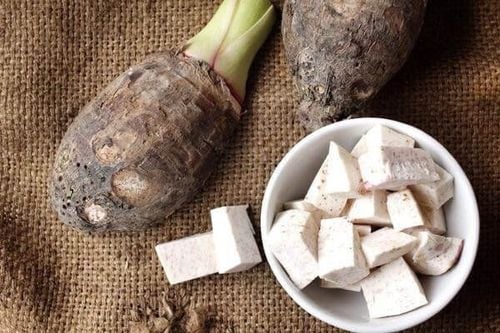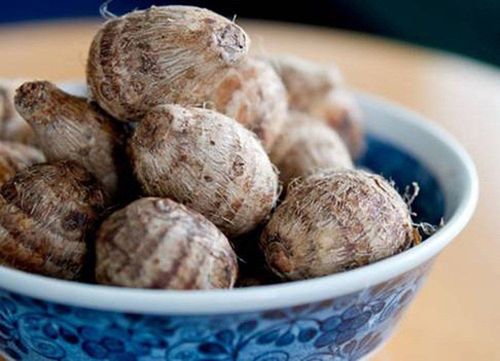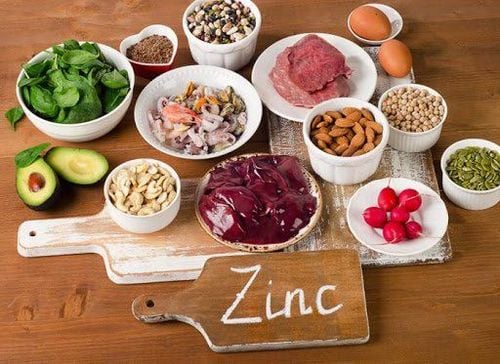Taro root is a type of starchy root vegetable originally cultivated in Asia but is gaining popularity worldwide. This vegetable has brown outer skin and white flesh with translucent purple speckles. When cooked, taro root has a mildly sweet taste and a texture similar to potatoes. Taro root is an excellent source of fiber and other essential nutrients, providing numerous potential health benefits.
1. Nutritional Components
A serving of 132 grams of cooked taro root contains 187 calories, mostly from carbohydrates and other nutrients, such as:
- Fiber: 6-7 grams
- Manganese: 30% of Daily Value (DV)
- Vitamin B6: 22% DV
- Vitamin E: 19% DV
- Potassium: 18% DV
- Copper: 13% DV
- Phosphorus: 10% DV
- Magnesium: 10% DV
- Vitamin C: 11% DV
Taro root is rich in fiber, potassium, magnesium, and vitamin C—essential nutrients that many individuals often overlook.

2. Control Blood Sugar
Although taro root is a starchy vegetable, it contains two types of carbohydrates that are beneficial for managing blood sugar levels: fiber and resistant starch.
Fiber is a type of carbohydrate that humans can digest. Since fiber is not absorbed, it has no impact on blood sugar levels. It helps slow down the digestion and absorption of other carbohydrates, preventing a spike in blood sugar after meals. Studies have found that a high-fiber diet—containing up to 42 grams of fiber per day—can reduce blood sugar levels by about 10 mg/dl in people with type 2 diabetes.
Taro root also contains a special type of starch called resistant starch, which humans cannot digest and, therefore, does not raise blood sugar levels. About 12% of the starch in cooked taro root is resistant starch.
The combination of resistant starch and fiber makes taro root a good choice, especially for people with diabetes.

3. Reducing the Risk of Heart Disease
The fiber and resistant starch in taro root may also help reduce the risk of heart disease. Studies have found that people who consume more fiber tend to have a lower risk of heart disease.
One study showed that for every 10 grams of fiber consumed daily, the risk of death from heart disease decreased by 17%. Taro root also provides resistant starch, which lowers cholesterol and is associated with a reduced risk of heart disease. Additionally, taro root contains over 6 grams of fiber per serving (132 grams), more than twice the amount found in an equivalent serving of potatoes.
4. Preventing Cancer
Taro root contains plant-based compounds called polyphenols that provide various health benefits, including the ability to reduce cancer risks. The primary polyphenol found in taro root is quercetin, which is also abundant in onions, apples, and tea.
Test-tube and animal studies have found that quercetin can stimulate the breakdown of cancer cells, slowing the growth of several types of cancers. It is also a powerful antioxidant that protects the body from damage caused by free radicals.
One test-tube study found that taro extract could stop the spread of some types of breast and prostate cancer cells, but no human research has been conducted.

5. Weight Loss Support
Taro root is a good source of fiber, containing 6.7 grams per serving (132 grams). Studies have found that people who consume more fiber tend to have lower body weight and less body fat. This may be due to the impact of fiber in slowing down the stomach's emptying process, helping users feel fuller for longer and reducing the number of calories absorbed. As a result, it contributes to long-term weight loss. The resistant starches in taro root may have a similar effect.
One study showed that men who took a supplement containing 24 grams of resistant starch before meals consumed about 6% fewer calories and had lower insulin levels after meals compared to the control group. Animal studies also showed that mice fed a diet high in resistant starch had less overall body fat and abdominal fat.
6. Support Gut Support
Because taro root is rich in fiber and resistant starch, this food may benefit gut health.
The body often cannot digest or absorb fiber and resistant starch, so these nutrients remain in the intestines and are transported to the colon, where they serve as food for gut bacteria and promote the growth of beneficial microbes. When gut bacteria ferment these nutrients, they produce short-chain fatty acids that nourish the cells lining the intestines and help maintain a healthy digestive system.
A study in pigs showed that a diet high in resistant starch improved colon health by increasing short-chain fatty acid production and reducing damage to the colon cells.

7. Easy to Consume and Prepare
Taro root has a starchy texture and a mild, slightly sweet flavor, similar to sweet potatoes. It can be used in both sweet and savoury dishes.
Some ways to prepare this food include:
- Fried Taro: Slice the taro thinly and bake or deep fry it.
- Mashed Taro: Steam and mash the taro into a smooth, purple-colored mixture.
- Taro Tea: Mix taro or use taro powder in tea to create a visually appealing purple drink.
- Baked Goods: Incorporate taro flour into cake flour and bake as you would with regular cake batter.
- Taro Pancake: Mix cooked taro with spices and pan-fry until crispy.
- Soups and Stews: Cut the taro into cubes and use it in soups.
Users should note that fresh taro root contains protease and oxalate, which can cause a tingling or burning sensation in the mouth when eaten. Therefore, it is best to cook taro thoroughly before consumption.
To arrange an appointment, please call HOTLINE or make your reservation directly HERE. You may also download the MyVinmec app to schedule appointments faster and manage your reservations more conveniently.
Reference article: Healthline.com













